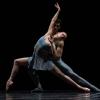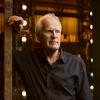
There are Don Quixotes and then there’s the San Francisco Ballet’s, trotting into the War Memorial Opera House last weekend by pony and by steed, but never by stealth. Onstage, there were horseshoes and character shoes, slippers and pointe shoes, united in service to Miguel de Cervantes’s romantic comedy by way of choreographers Petipa and Gorsky. In 2012, Artistic Director Helgi Tomasson and Choreographer-in-Residence Yuri Possokhov wrested the Don from other versions’ occasional longueurs with a choreographic infusion of energy, impeccable miming and timing, and — best of all— astonishing dancing to the music of Ludwig Minkus, led on Sunday afternoon by Principal Guest Conductor Ming Luke.
Since Don Q’s last performance in 2019 and the lengthy COVID-induced hiatus soon thereafter, San Francisco Ballet has of course changed, and Sunday’s performance offered a great opportunity to see in the abundance of its cast new and promoted artists as well as terrific dancers who’ve only gotten better. With the company led by Wona Park, elevated to principal in 2019, as Kitri, and Joseph Walsh, a principal since 2014, as Basilio, a full, delightful range of growth and experience was on display — and on fire.

Don Quixote (Alexander Reneff-Olsen), a dreaming, wannabe knight in tinny armor, and his shambling stolen-ham-on-the-lam sidekick Sancho Panza (Davide Occhipinti) rode into sun-struck, seaside Barcelona on a sweet old white horse and an endearingly tiny pony, respectively, searching for Dulcinea, object of the Don’s chivalric 16th-century quest. They found instead Kitri and Basilio, in love against her father Lorenzo’s (Ricardo Bustamante) wishes that she marry the feckless fop Gamache (Daniel Deivison-Olivera), a wonderfully clumsy tower of satin, lace and feathers.

Yes, hijinks ensue, more than can or should be revealed here, but you can forecast but how good the ballet is going to be from Kitri and Basilio’s brief, all-eye-contact pas de deux in the town square, as well as the simmering, flamenco-esque encounter between the toreador Espada (John-Paul Simoens), and Kitri’s friend Mercedes (Jennifer Stahl). In endeavors now and to come, the dramatic moments are amplified by Thamires Chuvas and Elizabeth Powell, as Kitri’s friends, and the corps de ballet, whose precision and beauty reinforces each mood and style with wit and splendor. The stunning costumes, a controlled, swirling cacophony of bright orange, yellow, purple, navy, and red, were created by Martin Pakledinaz, who also designed the sets.

In Act II, the Don visits a Gitano camp in the country and meets a windmill, attacking it with his lance. The windmill wins. Knocked out, the Don sleeps, dreaming up a vision scene, as romantic ballets are wont to have. This one is stunning, ruled by the Queen of the Driads, Wan Ting Zhao, and Park’s Kitri, now portraying the Dulcinea of Don Quixote’s dream. Sparkling tiaras rule. Zhao’s stunning extensions make the most of her long legs; she and Park are the reigning ballerinas of any child’s dream. Beneath a starry blue sky, the corps de ballet of Driads in pale satin tutus are led by Julia Rowe’s charming Cupid, given to precise little jumps and flighty, feathery arms.

It remains only for the Don to awaken and go with Sancho to the tavern, where there’s a delightful confrontation between Basilio, Kitri, and her poor dad, tricked, of course, by the young lovers into giving them his blessing. From there, as fast as the corps de ballet can snap their fingers, and they do, we go to the wedding feast, back in Barcelona. Everyone is forgiven, fights are forgotten, and it’s time for wonderful folk-based dances by the corps, funny byplay, and, finally the fabled and fabulous (or so one hopes) Don Quixote pas de deux.
Wona Park’s Kitri, who began her journey on somewhat tentative legs, if precise footing, bloomed into her full and seemingly inexhaustible glory as a ballerina in the pas de deux. Her confidence came forth in each hop in arabesque, pirouette, each Kitri jump. (As the program thoughtfully explains, it’s that huge grand jete where the ballerina, airborne, nearly kicks the back of her head. Its invention is credited to the great Maya Plisetskaya.) The trick is to make it look effortlessly terrific, and Park did. Walsh’s Basilio burst with pyrotechnic ardor into huge leaps, fusillades of grand pirouettes and air turns. Kitri and Basilio seemed to delight in spurring each other onward, solo unto solo, until they climactically reunited forever.

The audience was on its feet, cheering the fun, the beauty, the near impossibility of what they had seen. There are but five or six Don Quixotes remaining this season, and you Don wanna miss it.
NOTE: Some of photos above show members of the alternating casts for Don Quixote. Details at the SF Ballet website.





